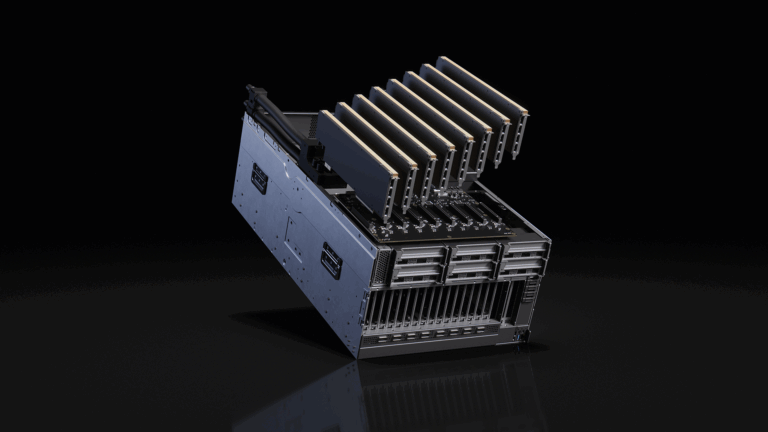AI is quickly becoming an integral part of diverse industries, from transportation and healthcare to manufacturing and finance. AI powers chatbots, recommender…
AI is quickly becoming an integral part of diverse industries, from transportation and healthcare to manufacturing and finance. AI powers chatbots, recommender systems, computer vision applications, fraud prevention, and autonomous vehicles. It also has broad applications in engineering and science.
Physics-informed machine learning (physics-ML), for example, leverages knowledge of the physical world to train AI models. It is well suited for modeling real-world systems, from extreme weather to turbulent flow over a car.
Figure 1. Physics-ML is used to model physical systems such as weather, ocean currents, and tidal activity
Academic institutions play a pivotal role in nurturing emerging technologies and driving the innovation needed for their widespread adoption. There is no debating that today’s students who want to succeed in tomorrow’s workplace need to understand how AI can enable solutions.
To support this work, NVIDIA is collaborating with pioneers at the intersection of science, engineering, and AI to create the first Deep Learning for Science and Engineering Teaching Kit for educators in academia worldwide.
This new teaching kit will enable the next generation of engineers and scientists to leverage AI for innovation in the field of engineering and science. It was created with leading academics including George Karniadakis, professor of Applied Mathematics and Engineering at Brown University, and his team.
“We designed this course with my collaborator, Dr. Raj Shukla, to address the urgent need for specific material for scientists and engineers,” said Karniadakis. “We focused on regression and mimicking the approximation theory and algorithms required in classical numerical analysis courses in the engineering curriculum.”
Educators can get full, free access to the Deep Learning for Science and Engineering Teaching Kit (and many more) by joining the NVIDIA DLI Teaching Kit Program. Kits include lecture materials, labs, and sample problem sets to facilitate incorporating advanced technology into course curriculums. The entire lecture portion of the course is also available on NVIDIA On-Demand.
Overview of the Science and Engineering Teaching Kit
Educators in various fields will find this teaching kit useful, from mechanical, structural, and electrical engineering to atmospheric science, computational science, and more. Materials in the kit include the fundamentals of deep learning as well as advanced topics and hands-on exercises. It contains 15 lectures totaling about 30-35 hours, homework, and 20 projects across different fields.
The Deep Learning for Science and Engineering Teaching Kit contains focused modules that combine theory, algorithms, programming, and examples. Highlights include:
A primer on Python plus scientific and deep learning libraries
Deep neural network architectures, training, and optimization
Physics-informed neural networks
Neural operators
Data and uncertainty quantification
High-performance computing (HPC) and the NVIDIA Modulus open-source framework
This content is ideal for educators in engineering and science. The modular design enables instructors to develop their own custom version of the course to suit the needs of their students.
The teaching kit includes dedicated modules for physics-ML, due to its potential to transform HPC simulation workflows across disciplines. These include computational fluid dynamics, structural mechanics, and computational chemistry. Because of its broad applicability across science and engineering domains, physics-ML is well suited for modeling real-world multiphysics systems.
AI surrogate models can help develop a wide range of solutions including weather forecasting, reducing power plant greenhouse gasses, and accelerating clean energy transitions. Such physically consistent surrogate models can underpin the deployment of large-scale digital twins of real-world systems.
“To this end,” Karniadakis said, “the focus of the course is how to solve forward and inverse problems given sparse and noisy data, how to discover governing physical laws, how to construct proper surrogate models for digital twins, and how to quantify uncertainties associated with models and data.”
The kit leverages the open-source NVIDIA Modulus framework with hands-on tutorials for project-based learning. Modulus enables engineering and scientific communities that may not have AI or programming expertise. With a Python-based interface, Modulus provides the right tools to combine the governing partial differential equations and other attributes of the problem like the physical geometry and boundary conditions with the training dataset in a simple way.
It also provides a variety of reference applications as starting points, across domains (computational fluid dynamics, structures, thermal) applied to problems in different segments from manufacturing to healthcare. To learn more, see Physics-Informed Machine Learning Platform NVIDIA Modulus Is Now Open Source.
This teaching kit has been used as course material at the University of Pennsylvania, Yale University, and Brown University. Based on positive feedback, NVIDIA is now providing this first publicly available version of the kit. As well, the University of Illinois Urbana-Champaign, MIT, Imperial College London, and KTH Royal Institute of Technology have expressed strong interest in using this kit.
Given the rapid pace of change in the field of AI, educators can anticipate that the teaching material will be updated, as needed. NVIDIA is committed to providing the best educational materials, and feedback is welcome.
“The NVIDIA Teaching Kit on physics-ML has provided me with great resources for use in my machine learning course targeted for our engineering students,” said Hadi Meidani, associate professor of Civil & Environmental Engineering at University of Illinois Urbana-Champaign. “The examples and code greatly enable hands-on learning experiences on how machine learning is applied to scientific and engineering problems.”
Get started
Educators can get full, free access to the Deep Learning for Science and Engineering Teaching Kit (and many more) by joining the NVIDIA DLI Teaching Kit Program. The entire lecture part of the course is also openly available through NVIDIA On-Demand.
For access to tutorial content, reach out to the Modulus team. To get started with NVIDIA Modulus hands-on experience, see Introduction to Physics-Informed Machine Learning with Modulus.











